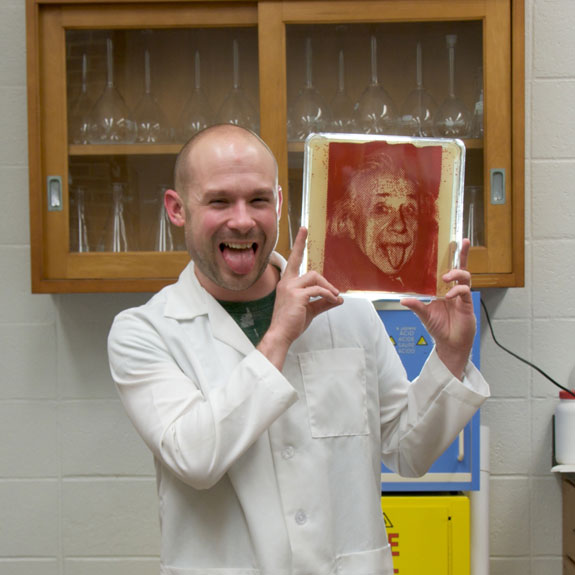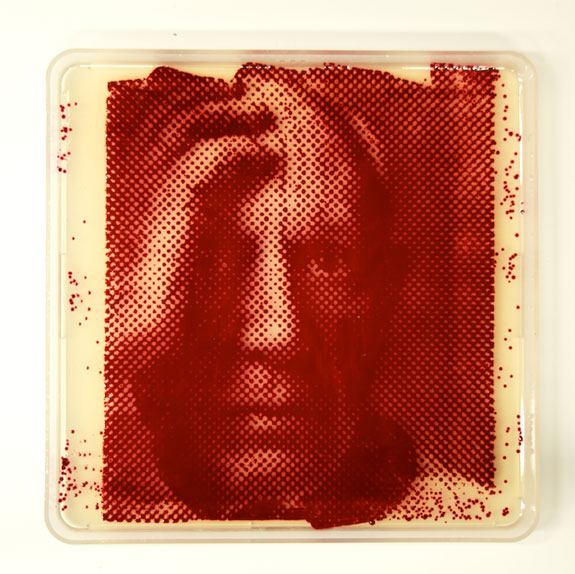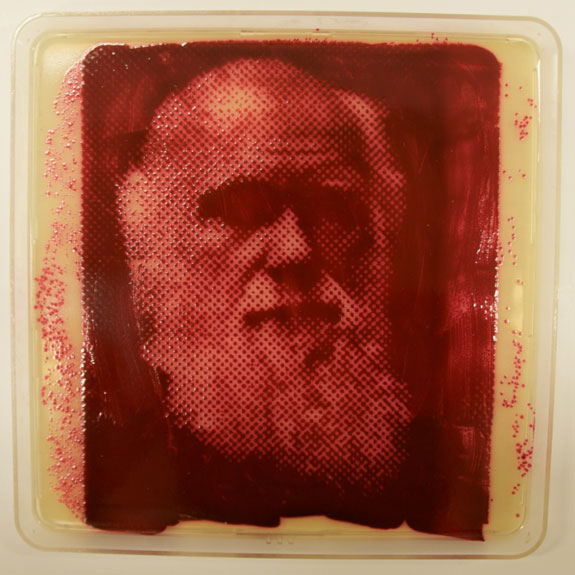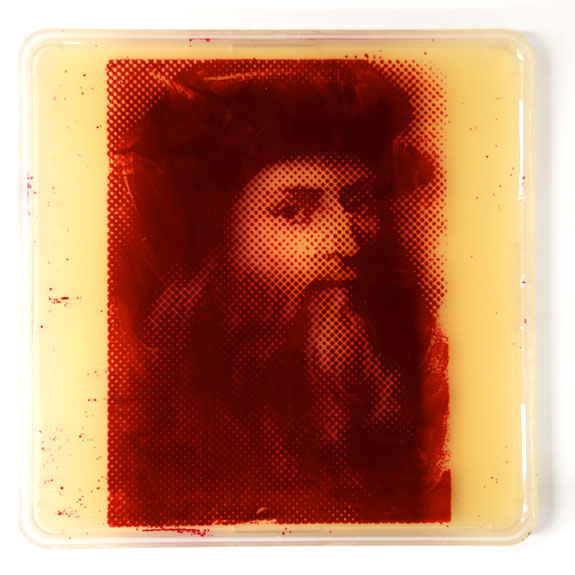Painting Portraits With Bacteria
Microbiologist Zachary Copfer has created detailed portraits of famous artists and scientists in petri dishes
![]()
“I’m a microbiologist masquerading as an artist. Or am I an artist masquerading as a microbiologist?” says Zachary Copfer on his personal Web site, Science to the Power of Art. “I can’t seem to remember anymore.”
His confusion over how to describe himself is understandable. Copfer is an artist in a lab coat.
Copfer graduated from Northern Kentucky University with a bachelor’s degree in biological sciences and secondary education in 2006. He then worked as a microbiologist for Proctor & Gamble and Teva Pharmaceuticals for five years. However, he quickly learned that the commercial lab setting wasn’t the best fit for him. ”I began to lose sight of all that I had found romantic about science,” says Copfer, on his site.
Copfer instead channeled his creative energies into art, pursuing a masters in fine art in photography at the University of Cincinnati. “Photography developed into my new method of inquiry. Everything that I had missed about science I rediscovered in photography,” he adds. He completed his coursework in June.
Already, Copfer’s experimentations have led to the creation of a medium he calls “bacteriography.” Essentially, the microbiologist-turned-artist borrows techniques from traditional darkroom photography to develop recognizable images in growing colonies of—yes, you got it—bacteria.
Copfer has created a series of “bacteria portraits” of famous artists and scientists, including Leonardo da Vinci, Pablo Picasso, Charles Darwin and Albert Einstein. For each one, he covered a large petri dish, measuring 9.5 by 9.5 inches, in Serratia marcescens, a bacteria responsible for some hospital-acquired infections. “I use it because it is red and it pops and it gives you that great color,” Copfer told Cincinnati Public Radio.
Then, the artist placed a photograph in the dish. For instance, in one, he laid the famous photograph of Einstein sticking his tongue out, captured by UPI photographer Arthur Sasse on the scientist’s 72nd birthday. Instead of exposing the setup to ultraviolet light, as you would when developing a photograph in a darkroom, Copfer exposed it to radiation. The image cast a shadow on the bacteria. In that shadow, the bacteria grew, but in areas where the radiation passed through, they did not. Once those colonies of bacteria grew to his liking, and the piece was finished, so to speak, Copfer irradiated the portrait, killing the bacteria. Finally, he sealed the portrait with a layer of acrylic, so that it could be safely displayed.
The resulting portraits are bold, pop art-like reproductions of the original photographs. Comprised of red dots—each a tiny colony of bacteria—the images call to mind Roy Lichtenstein‘s comic-strip style of portraiture.
In the titles of his works, Copfer refers to artists da Vinci and Picasso as “scientists” and scientists Darwin and Einstein as “artists.” He believes that for many others, like himself, the titles are interchangeable.
“For me, the two seemingly disparate fields of study serve the same purpose, a way to explore my connection to everything else around me,” he says, on his site.
/https://tf-cmsv2-smithsonianmag-media.s3.amazonaws.com/accounts/headshot/megan.png)





/https://tf-cmsv2-smithsonianmag-media.s3.amazonaws.com/accounts/headshot/megan.png)